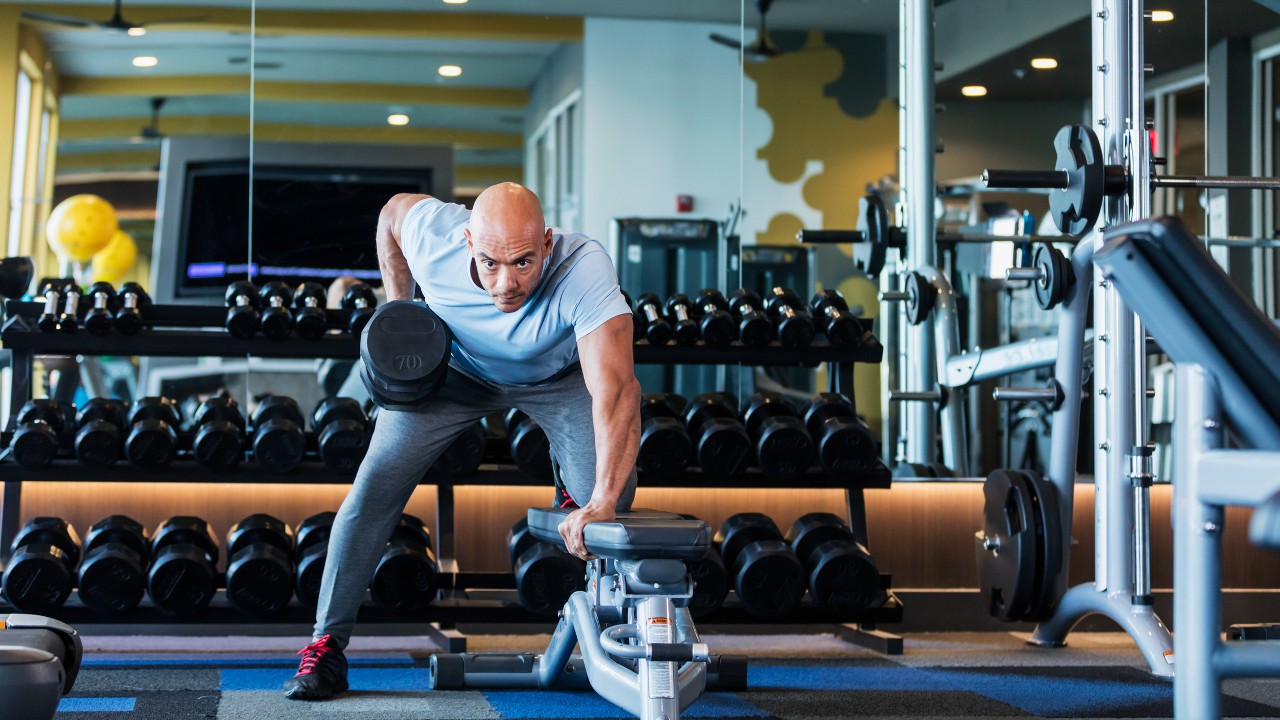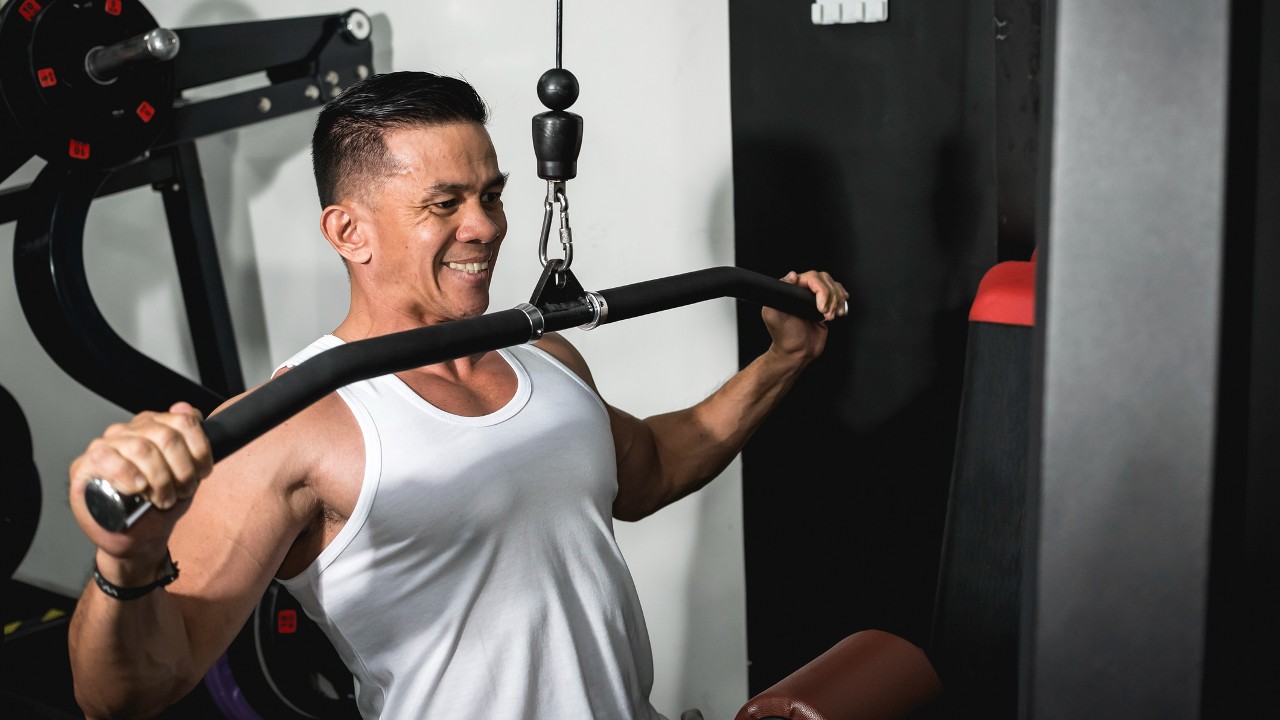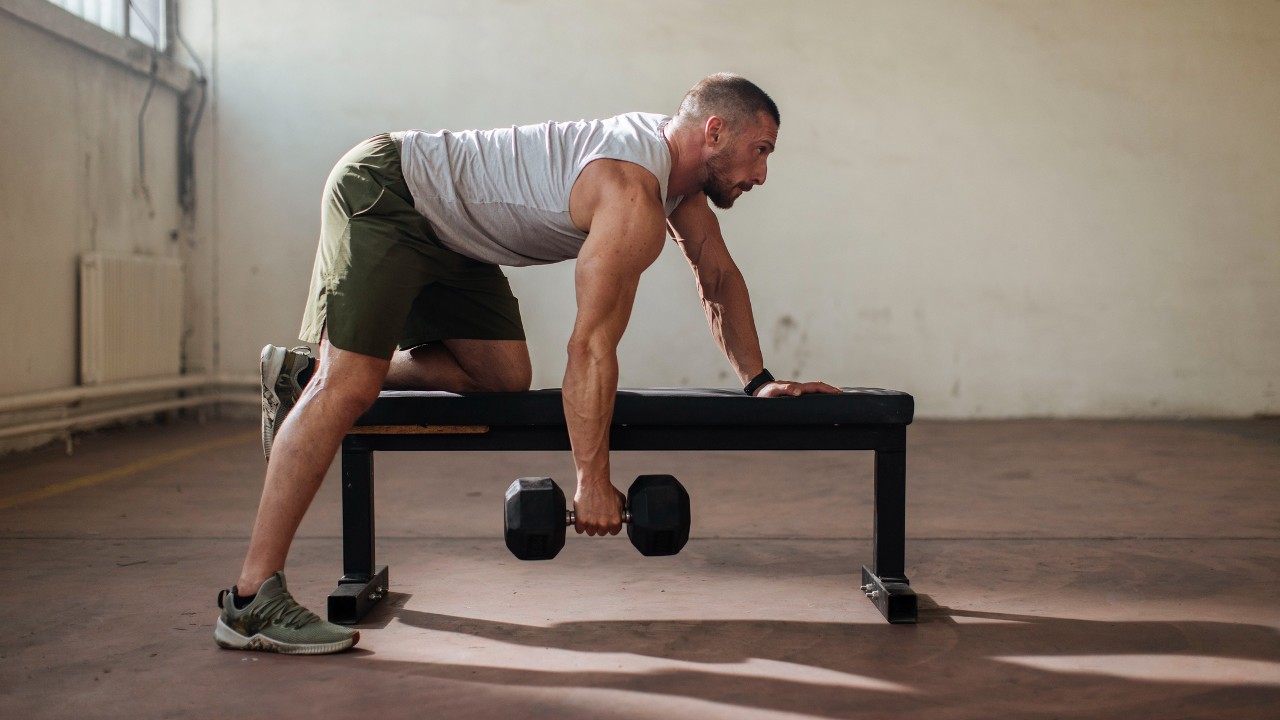This Pre-Exhaust Back Workout Will Help You Hit The Right Muscles
Are you really using the muscles you’re trying to target in a back workout? This technique can help you nail it

It is important when performing an exercise to make sure the muscle you are trying to work is really engaged and powering the movement. A statement of the bleeding obvious, we’re sure you’ll agree, and often it is very simple to do. Engaging and feeling the biceps work during a biceps curl is something most people can do intuitively. It can, however, be trickier with back workouts.
This is where a “pre-exhaust” workout can help.
“If we’re trying to target the lats, and we are unable to ‘feel’ them in movements and bring internal focus to this muscle, then using a single-joint isolation exercise will help switch the muscle on and improve the mind-muscle connection,” says Eddie Baruta, global head of gym floor execution at Ultimate Performance. “This will make the muscle more usable and ‘feelable’ on bigger, heavier compounds.
“This is what’s known as a ‘pre-exhaust’ and it’s a hypertrophy technique that is especially effective for those who have trouble recruiting or feeling the intended muscles.
“Here is a pre-exhaust back workout I love. If you’ve been struggling with your back training, this workout will provide the change in pace you might need.”
Pre-Exhaust Back Workout
The workout is made up of three supersets. In a superset you perform one set of exercise A, followed immediately by a set of exercise B. Once you’ve completed all reps of both, rest as indicated. Repeat that sequence until all the sets are completed, then move on to the next superset.
The tempo, or speed at which you perform the exercise, is also listed. If you haven’t come across this technique before, it’s explained in our guide to tempo training with weights.
Get the Coach Newsletter
Sign up for workout ideas, training advice, reviews of the latest gear and more.
1A Straight-arm pull-down

Sets 3-4 Reps 8-10 Tempo 3010 Rest 0sec
Attach the wide bar to the top pulley of a cable machine and hold it with your palms facing down. Stand back from the machine so your arms are fully extended. Keep your arms straight as you use your lats to pull the bar down to your thighs. Raise your arms back to the starting position, keeping them straight and controlling the weight on the way up.
1B Wide lat pull-down

Sets 3-4 Reps 8-10 Tempo 2012 Rest 2min
Move your hands to the ends of the bar and sit facing the cable machine. Pull the bar down to your chest, squeezing your lats at the bottom of the move, then control the bar’s rise.
2A One-arm dumbbell arc row

Sets 3-4 Reps 8-10 Tempo 3010 Rest 0sec
Place one knee and hand on a bench and lean over with your back straight. Grab a dumbbell with the other hand and bend your elbow slightly. Keep your arm in this position, maintaining the slight bend in the elbow, as you lift the dumbbell up and back towards your hip. Lower under control. Do your reps on one side, then do exercise 2B on that same side. Swap sides the next time you do this superset.
2B One-arm dumbbell row

Sets 3-4 Reps 8-10 Tempo 2012 Rest 2min
Starting in the same position as the arc row, perform a standard row by raising the weight to your chest, bending the elbow as you draw it up and past your torso. Make sure you feel the muscles on your back lifting the weight, rather than your arms.
3A Reverse dumbbell flye

Sets 3-4 Reps 8-10 Tempo 2012 Rest 0sec
Stand holding dumbbells. Hinge forwards at your hips, keeping your back straight and letting the weights hang below your chest. Keeping a slight bend in your elbows, lift both weights out to the sides under they are at shoulder height, then lower slowly.
3B Seated ropes row to neck
Sets 3-4 Reps 8-10 Tempo 2012 Rest 2min
Attach the rope handle to the seated cable row machine, or to the lowest pulley on a cable machine, and sit down holding the ends of the rope, far enough away so there’s a little tension in the cable. Pull the handle up and towards your neck, squeezing your shoulders together, then return to the starting position under control.

Nick Harris-Fry is a journalist who has been covering health and fitness since 2015. Nick is an avid runner, covering 70-110km a week, which gives him ample opportunity to test a wide range of running shoes and running gear. He is also the chief tester for fitness trackers and running watches, treadmills and exercise bikes, and workout headphones.









